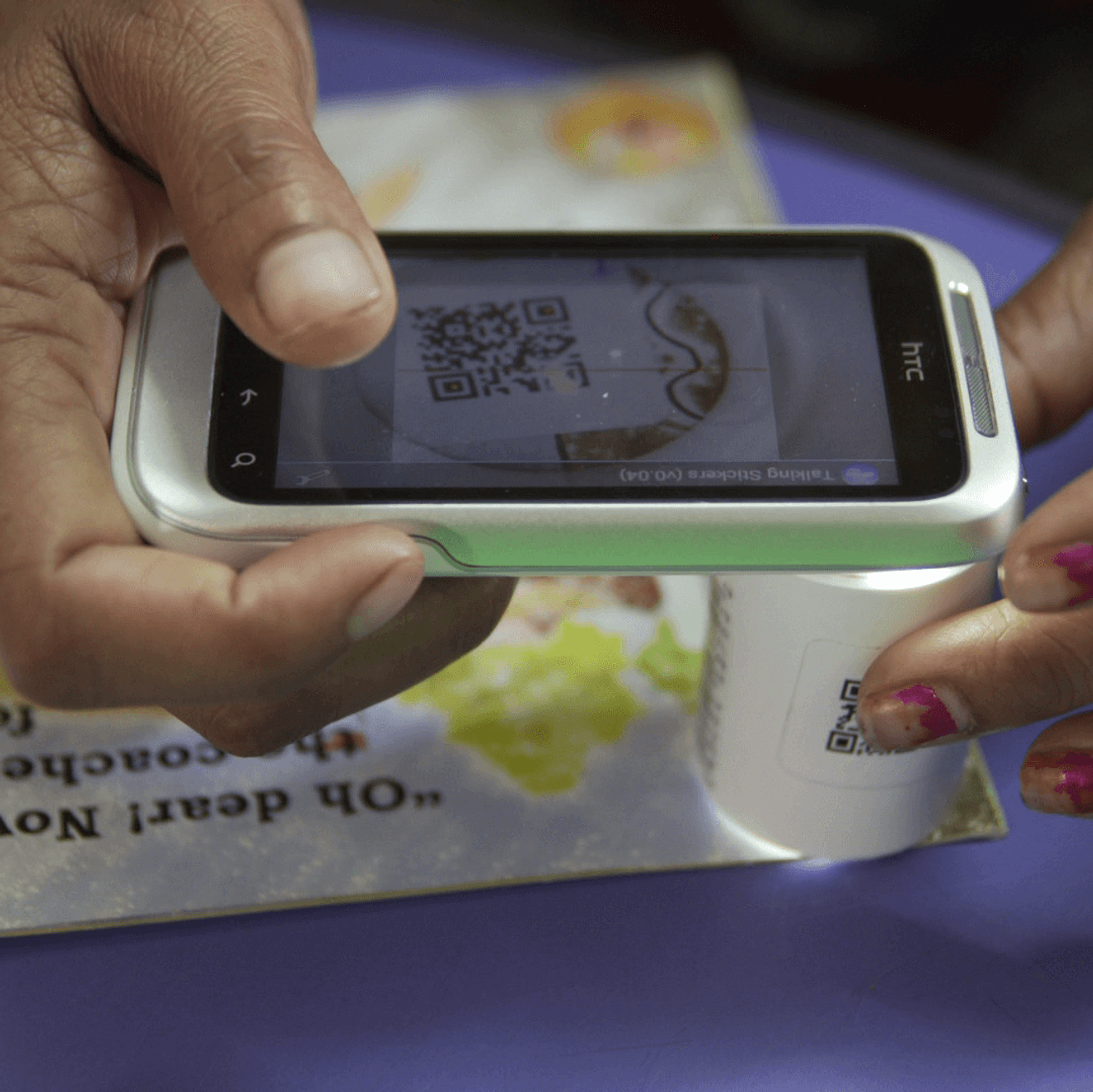Around the world, there are 250 million preschool children lacking the fundamental skills to have a proper start in primary school. What happens in the early years has far reaching consequences and the attainment gap tends to only widen as children journey through school. That’s simply too many futures at stake.
Limited vocabulary is a significant barrier to early school success. For children from low-income backgrounds, it can be more challenging to gain these fundamental skills. Research shows that disparities in vocabulary begin to appear at just 18 months old. The amount of education a parent received and their own level of literacy can impact on the amount and quality of the words their kids are exposed to. How can parents in these challenging situations support their children to develop cognitively during the vital early years?
A simple yet innovative technology is helping countless parents bring words to life. Attollo’s Talking Stickers are audio-visual stickers that can talk, sing and read in any language or spoken dialect around the world. Aimed at children aged 2-6 years old, the stickers improve language and vocabulary skills to get kids ready for primary school. Using nothing but low cost smartphones and stickers, suddenly parents are equipped to introduce their children to a whole world of words.
Whether it’s a shiny star for good behaviour or bedroom walls plastered in superhero stickers, there’s something about stickers and childhood that goes hand in hand. So interactive, educational stickers seem like an ideal solution for early childhood learning. “Every child loves stickers” explained Lak Chinta, CEO and co-founder. “We used this fact to design Talking Stickers for children to improve language skills through play.”
The stickers utilize QR codes which can be added to images or stuck into books to help families read along together. When a child engages with stickers it feels more like play, something that is a distinct advantage as it allows children to learn at their own pace, stay motivated and remain engaged in the tricky business of language learning.
Motivated kids are obviously a huge motivational factor for parents, too. But it’s not the only benefit of Talking Stickers. Engagement with the stickers naturally fosters parent-child interaction and improves communication between parent and child. Illiterate parents who may have never had access to education themselves can learn with the stickers too and have an impact on their own child’s progress. Talking Stickers has even been rolled out into other contexts, such as on medicine packaging, so that adults with limited literacy can safely access instructions, showing that this versatile tool has the power to improve lives in diverse contexts.
While Talking Stickers was originally designed to be a home based intervention, the innovators realised that it also has huge implications for schools. Teachers are able to record lessons or record themselves reading a book, so that the children and their parents can listen to it again as much as they like at home. Talking Stickers can also be integrated into the classroom as a fun learning tool that extends their home practise.
The results of this simple solution are undeniable. Pilot studies suggest that Talking Stickers increases parent-child interaction time each day by an average of 42 minutes. With this increased interaction time and access to educational stickers in their home, children aged 3-4 learned on average 11 new words per week, while children aged 5-6 learned 26. Parents are most often the child’s earliest teacher, and with Talking Stickers they are armed to expose their kids to more diverse vocabulary at the push of a button. Low cost and available in any language, Talking Stickers promise to open up the world of words to more and more children around the world.
Want to implement this in your setting? Get all the information you need right here.



